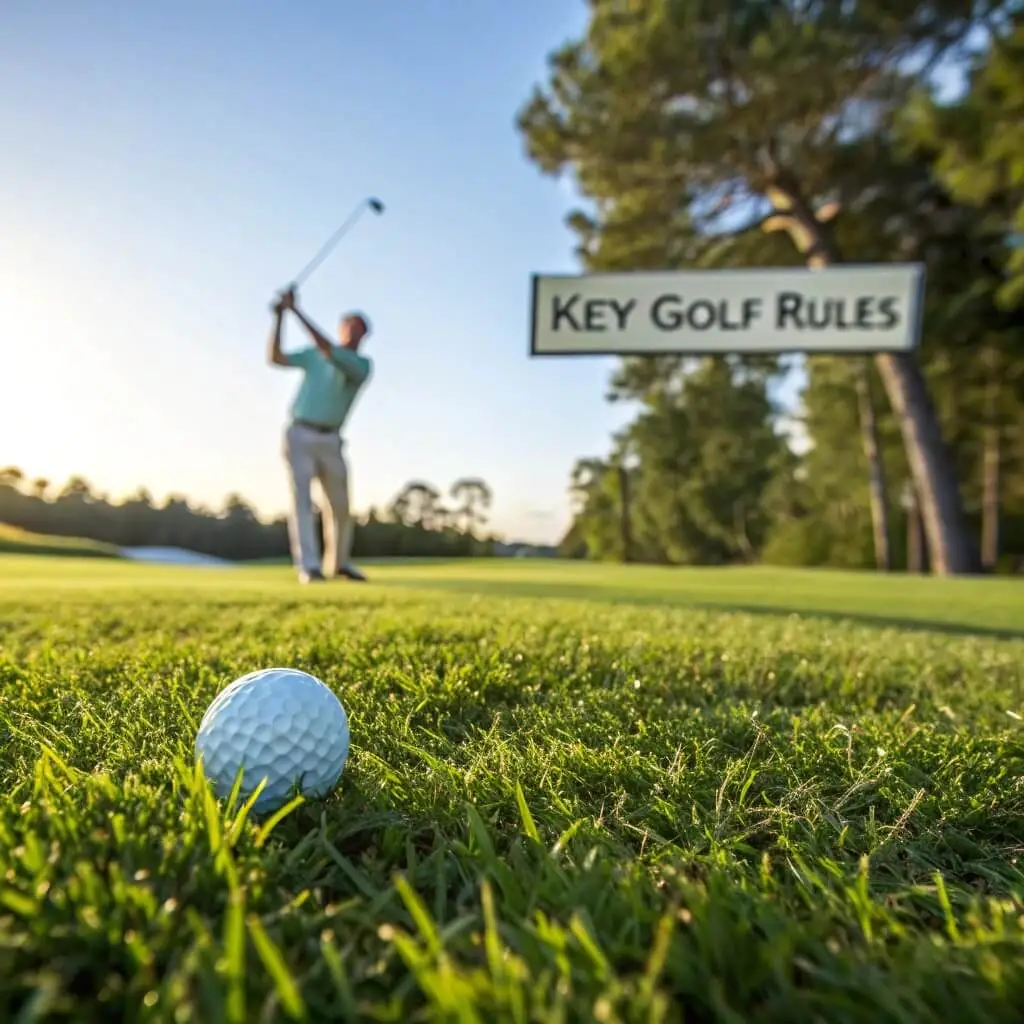Golf is a sport rooted in centuries of tradition. From the rolling greens of Scotland to the PGA Tour fairways, it’s a game of precision, etiquette, and oddly enough, some truly bizarre rules. While most casual players know the basics — keep your ball on the fairway, avoid the water, stay out of the bunkers — there are plenty of lesser-known rules in golf that could catch even seasoned players off guard.
Let’s dive into some of the weirdest golf rules you probably didn’t know existed. Whether you’re a weekend warrior or a curious newbie, these oddities might just change how you see the game forever.
1. The Wind Doesn’t Count Unless It’s Artificial
Golf is all about playing the course and the conditions. Rain, sunshine, and wind are all natural parts of the game. But here’s the twist: if the wind moves your ball and it’s natural wind, you’re off the hook. You don’t have to replace it, and there’s no penalty.
However, if a fan or another artificial source of wind causes the ball to move, it’s a whole different story. The rules treat artificial influences as outside agents, which means you may be required to replace the ball or even take a penalty stroke depending on the situation. It’s one of those rules that highlights how golf aims to respect natural conditions but control artificial interference.
2. You Can Hit a Moving Ball… Sometimes
In most sports, hitting a moving ball is the norm. In golf, it’s usually a strict no-no. Swinging at a moving ball typically earns you a penalty stroke. However, there are a few weird exceptions to this rule.
If your ball is oscillating but not technically in motion — for example, teetering on the edge of a cup — and you hit it, you might not be penalized. Even stranger, if the ball starts rolling due to a slope and you decide to hit it before it comes to a complete stop, the situation becomes murky. In match play, there’s more leniency, especially if the act wasn’t intentional.
3. Accidental Deflections Are OK… Sometimes
Imagine hitting a powerful shot only to have the ball ricochet off your golf bag, cart, or even your own foot. It sounds like a nightmare, right? Surprisingly, the rules can be forgiving depending on the context.
If the deflection is accidental and caused by you or your equipment, you may not be penalized under the latest updates to the rules. But here’s the weird twist: if it happens on purpose — say, trying to stop your ball from rolling into a hazard — expect penalties to come raining down. Intent matters a lot in golf’s rulebook.
4. The Ball Must Be Identified… Even in the Hole
You’d think sinking the ball would be the end of the story, but not always. There are bizarre scenarios where a ball lands in the hole, but the player must still identify it. This can happen in casual rounds where multiple similar balls are in play.
Let’s say two players both use the same brand and number of ball. One hits a long putt and it disappears into the cup, but no one saw the markings. If there’s any doubt about whose ball it is, the player might have to retrieve and prove it’s theirs. If not, they could be forced to replay the hole. Proof of ownership still applies, even in victory.
5. You Can’t Press Down a Loose Spike Mark… Or Can You?
Historically, players were not allowed to repair spike marks on the green. That meant if your ball’s path was interrupted by a scuffed-up surface, tough luck. Only ball marks and natural damage could be fixed.
Recent rule changes have made this one less weird — you can now repair almost any damage on the green, including spike marks. However, the spirit of the rule still maintains that you can’t create an advantage. If your repair smooths the green excessively or alters the line unfairly, you could still be penalized for improving your line of play.
6. If a Ball Lodges in Your Clothes, It’s Still in Play
Picture this: you hit a chip shot and the ball takes a funny bounce, ending up stuck inside your pant leg or shirt. As awkward as it sounds, this is a recognized scenario in golf.
According to the rules, if the ball comes to rest in your clothing, it is considered to be still in motion until you stop moving. Once you stop, the ball is deemed at rest. You’re allowed to drop it without penalty, but you have to be careful about where and how. The spot is determined as closely as possible to where the ball would have landed had it not been absorbed by your outfit.
7. The Flagstick Can Stay In or Out — Your Choice
This one might not seem too weird now, but it stirred plenty of controversy when it was introduced. For decades, players were required to remove the flagstick while putting, or else face a penalty if the ball hit it.
Now, players can leave the flagstick in or take it out, depending on personal preference. Some golfers believe the flag helps guide the ball in, while others find it distracting. The rule change made headlines not because it’s complex, but because it broke a long-standing tradition. Who knew such a small detail could cause such big debates?
8. Animal Interference Is Real
Nature and golf often clash, especially when wildlife gets involved. If a bird picks up your ball and drops it somewhere else, or a squirrel knocks it into a hazard, you’re not necessarily penalized.
The rulebook covers all sorts of animal interactions. These creatures are known as “outside influences,” and if your ball is moved by them, you typically get to replace it with no penalty. However, if your ball ends up lost because of the animal — say, a dog runs off with it — things get more complicated. You must do your best to estimate where the ball should have been and drop accordingly. It’s yet another instance where common sense meets quirk in the golf world.
9. You Can Play Backward to Escape Trouble
Most players aim to move the ball forward on every shot. But did you know you’re fully allowed to hit the ball backward if needed?
If you’re stuck in a tough lie near a hazard or a wall, hitting backward might be the only viable escape. The rules don’t require forward progress, only that you follow correct procedures. Some players have even chipped backward onto fairways to gain a better angle for their next shot. It’s counterintuitive, but totally legal.
10. A Ball Must Be Dropped From Knee Height — Not Shoulder
One of the most easily overlooked changes in golf rules involves how the ball is dropped. For decades, players would drop from shoulder height. But under newer rules, drops must be made from knee height.
It sounds like a minor detail, but it has strategic implications. A drop from shoulder height might cause the ball to bounce unpredictably or roll into a worse lie. Knee height drops are designed to keep the ball closer to the original spot. If you drop from the wrong height, you must re-drop or face a penalty. It’s one of the more oddly specific rules — and one that has tripped up many professionals.
11. You Can’t Use Your Club as a Measuring Device
When you’re determining relief or distance from a hazard, you might be tempted to use your club to measure. That’s legal to an extent — but only with the club you’re carrying for play.
What’s strange is you’re not allowed to use a longer club that you wouldn’t normally use for that shot just to gain a measurement advantage. So, if you carry a particularly long putter only to use it for measuring drops, that could be considered a rules violation. Golf wants you to play honestly, even when it comes to measuring your options.
12. No Standing Behind a Partner During a Stroke
In team formats like foursomes or best ball, communication and strategy are important. However, there’s a peculiar rule that prevents a player from standing directly behind their partner during a stroke.
Why? Because it could be seen as offering alignment help or visual guidance, which gives an unfair advantage. Once the stroke begins, you’re supposed to give your teammate the space to play independently. It’s a subtle rule that reinforces the individual integrity of each shot, even in team play.
13. A Club Can Be Broken Without Penalty
If you break a club out of frustration, that’s on you. But if your club breaks during a stroke or because of an accident — say it hits a rock mid-swing — you can continue playing with it.
What’s even stranger is that you’re allowed to replace the club mid-round if the break was unintentional. This is a shift from earlier rules that prohibited any equipment changes during a round. It’s a subtle, yet impactful rule change that helps players stay competitive without being punished for honest accidents.
Final Thoughts
Golf’s rich history is part of what makes it such a beloved sport. But that same history is also responsible for some truly weird and wonderful rules. From balls stuck in clothing to animals hijacking your shot, golf is full of situations that you just wouldn’t believe until you saw them.
Knowing these strange rules isn’t just fun trivia — it could save you a penalty stroke or two the next time you’re on the course. So the next time something bizarre happens during a round, don’t be too quick to assume you’ve made a mistake. The rulebook might just be on your side.
In the end, it’s all part of the charm that makes golf one of the most unpredictable, challenging, and oddly satisfying sports out there.

